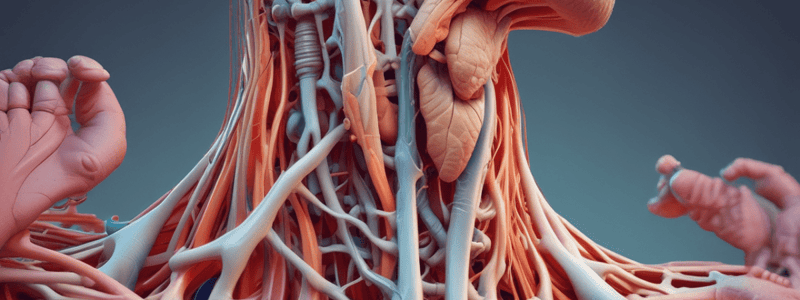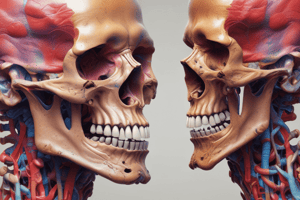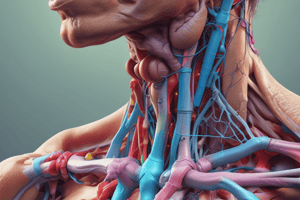Podcast
Questions and Answers
Match the following types of joints with their characteristics:
Match the following types of joints with their characteristics:
Synarthroses = Allow very little or no movement Diarthroses = Allow various kinds of movement Plane or gliding joints = Permit a gliding motion between flat surfaces Biaxial joints = Can be ellipsoid or saddle joints
Match the following examples of joints with their types:
Match the following examples of joints with their types:
Sutures = Synarthroses Knee joint = Hinge joint Wrist joint = Ellipsoid joint Shoulder joint = Ball-and-socket joint
Match the following descriptions with the correct type of diarthroses:
Match the following descriptions with the correct type of diarthroses:
Allow movements on only one plane = Uniaxial hinge joints Allow rotation only around the axis = Uniaxial pivot joints Allow a wide range of movement: backwards, forwards, sideways and rotation = Multiaxial ball-and-socket joints Have articular surface of one bone concave and convex in different directions = Saddle joints
Match the following examples of diarthroses with their respective movements allowed:
Match the following examples of diarthroses with their respective movements allowed:
Match the following movements with their respective types of diarthroses:
Match the following movements with their respective types of diarthroses:
Match the following pairs with the correct multiaxial joints:
Match the following pairs with the correct multiaxial joints:
Match the following types of joints with their primary characteristic:
Match the following types of joints with their primary characteristic:
Match the following examples of synarthroses joints with their descriptions:
Match the following examples of synarthroses joints with their descriptions:
Match the following types of uniaxial diarthroses with their examples:
Match the following types of uniaxial diarthroses with their examples:
Match the following types of biaxial joints with their examples:
Match the following types of biaxial joints with their examples:
Match the following multiaxial joints with their examples:
Match the following multiaxial joints with their examples:
Match the following types of joints with their primary characteristic:
Match the following types of joints with their primary characteristic:
Match the following examples of synarthroses joints with their descriptions:
Match the following examples of synarthroses joints with their descriptions:
Match the following types of uniaxial diarthroses with their examples:
Match the following types of uniaxial diarthroses with their examples:
Match the following types of biaxial joints with their examples:
Match the following types of biaxial joints with their examples:
Match the following multiaxial joints with their examples:
Match the following multiaxial joints with their examples:
Match the following movements with their respective types of diarthroses:
Match the following movements with their respective types of diarthroses:
Flashcards are hidden until you start studying




